|
The Museum of Early Home
Entertainment
by Bob
Brooke
Tucked away in a plain
brick building on a side street in a quiet neighborhood of Dover,
Delaware, is the Johnson Victrola Museum. It’s unassuming exterior
belies the excitement inside, for its two floors are packed with all
sorts of entertainment machines, from early Victrolas to more complex
and luxurious Electrola Fadiola. In the days before T.V. and Netflix,
families gathered around their Victrola to listen to music or dance
after dinner. It was a revolutionary method of home entertainment for
which Eldridge Reeves Johnson was responsible.
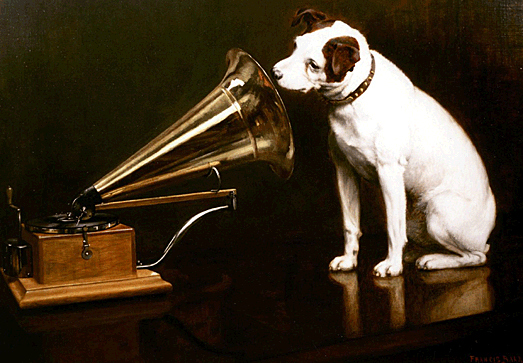
E.R. Johnson
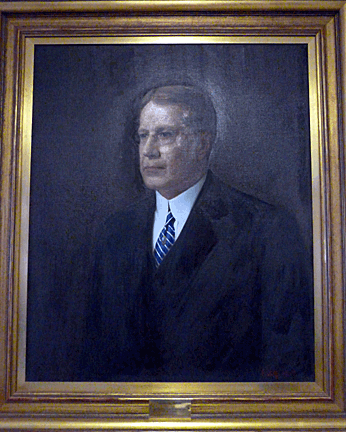 Johnson
was an American businessman and engineer who founded the Victor Talking
Machine Company and built it into the leading American producer of
phonographs and phonograph records and one of the leading phonograph
companies in the world at the time. Johnson
was an American businessman and engineer who founded the Victor Talking
Machine Company and built it into the leading American producer of
phonographs and phonograph records and one of the leading phonograph
companies in the world at the time.
While cylinder phonographs had been equipped with clockwork motors for
some time, the disc playing gramophone presented a number of design
challenges in this regard. Foremost was the drag that the needle and
soundbox created when applied to the outer edge of the disc. This
required that the motor provide sufficient torque at start up while
retaining a constant speed. Representatives of the Berliner company were
satisfied with Johnson's design, and within a year Johnson had begun
producing motors for Berliner.
Johnson continued to refine the motor during this period, externalizing
the motor and leveraging a triple ball based centrifugal governor design
to maintain a constant rate of speed. Johnson also spent a winter in
Philadelphia collaborating on various gramophone refinements with Alfred
C. Clark; the most significant of these was a vastly improved soundbox.
Along with Johnson's new motor, the Clark-Johnson soundbox became the
foundation for Berliner's Improved Gramophone of 1897.
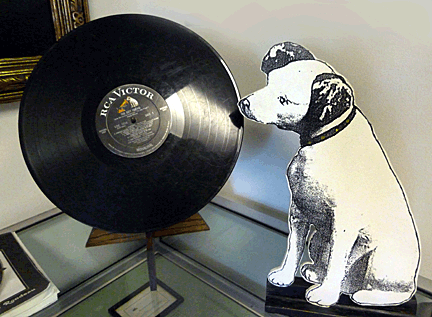 In
1900, after two years and $50,000 of investment, Johnson prepared to
enter the gramophone record market. He incorporated as the Consolidated
Talking Machine Company, Inc., and began selling records as well as a
variety of gramophone models under this name. This brought Johnson
directly into the bitter Seaman-Berliner legal dispute. Seaman sued in
early 1901 and requested an injunction prohibiting Johnson from selling
gramophones. The manufacturing injunction was denied, but Johnson was
temporarily enjoined from using variations on the word gramophone. On
March 12, less than two weeks after the court decision, Johnson
registered the Victor Talking Machine Company In
1900, after two years and $50,000 of investment, Johnson prepared to
enter the gramophone record market. He incorporated as the Consolidated
Talking Machine Company, Inc., and began selling records as well as a
variety of gramophone models under this name. This brought Johnson
directly into the bitter Seaman-Berliner legal dispute. Seaman sued in
early 1901 and requested an injunction prohibiting Johnson from selling
gramophones. The manufacturing injunction was denied, but Johnson was
temporarily enjoined from using variations on the word gramophone. On
March 12, less than two weeks after the court decision, Johnson
registered the Victor Talking Machine Company
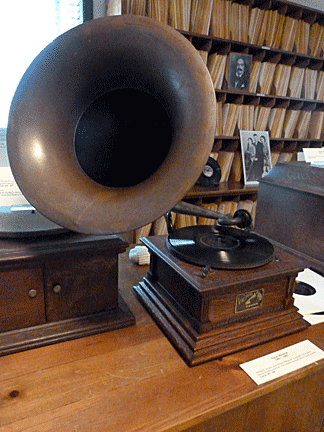 Meanwhile,
Johnson’s Victor Talking Machine Company was producing its earliest
Victrolas, designated by "VTLA"—an abbreviation for Victrola that
appeared on the nameplate. Soon, the company marketed it as "Victrola
the Sixteenth" or VV-XVI. His company also experimented with marketing a
more deluxe model, with gold plated trim on the cabinet, designated "Victrola
the Twentieth" or VV-XX, which sold for $300,. Victor produced only a
few hundred of these models before discontinuing due to the high cost.
By 1908, Victor added different finish choices, including oak, walnut,
and even custom painted versions to its cabinets. Meanwhile,
Johnson’s Victor Talking Machine Company was producing its earliest
Victrolas, designated by "VTLA"—an abbreviation for Victrola that
appeared on the nameplate. Soon, the company marketed it as "Victrola
the Sixteenth" or VV-XVI. His company also experimented with marketing a
more deluxe model, with gold plated trim on the cabinet, designated "Victrola
the Twentieth" or VV-XX, which sold for $300,. Victor produced only a
few hundred of these models before discontinuing due to the high cost.
By 1908, Victor added different finish choices, including oak, walnut,
and even custom painted versions to its cabinets.
By the middle of 1909, Johnson knew he had a huge hit. He had already
sold about 15,000 Victrolas, so he decided to capitalize on his success
by introducing a lower priced model. Later that year, Victor introduced
the tabletop Victrola XII, selling for $125. This first attempt to make
a low-price compact Victrola wasn’t successful, however, since the horn
opening
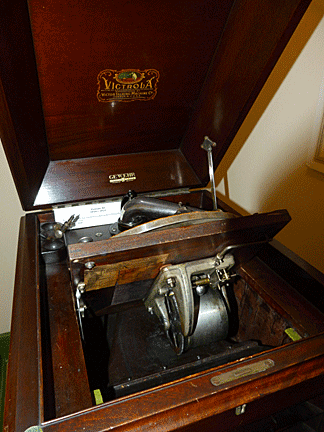 was
too small for adequate volume in a large room. In 1910, the firm
improved the sound quality of its first tabletop model, replacing it
with the Victrola X and Victrola XI. But they were still too expensive
for the average American household. was
too small for adequate volume in a large room. In 1910, the firm
improved the sound quality of its first tabletop model, replacing it
with the Victrola X and Victrola XI. But they were still too expensive
for the average American household.
In 1911, Victor launched several new low-priced models, the VV-IV,
VV-VI, VV-VIII and VV-IX, with prices ranging from a remarkable $15.00
up to $50.00. These machines were a huge success, and Victrola
production rose from several thousand per year in 1906, to approximately
250,000 per year by 1913.
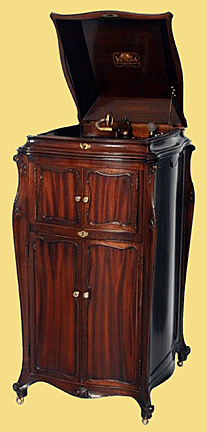 By
1917, Victor was producing over a half million Victrolas annually. The
most popular one was the VV-XI floor model, selling over 850,000 copies
from 1910 to 1921. For the wealthy customer, Victrolas were also
available in a variety of custom designs, with hand painted images,
exotic wood, and Japanese lacquer finishes. By
1917, Victor was producing over a half million Victrolas annually. The
most popular one was the VV-XI floor model, selling over 850,000 copies
from 1910 to 1921. For the wealthy customer, Victrolas were also
available in a variety of custom designs, with hand painted images,
exotic wood, and Japanese lacquer finishes.
In November, 1925, Victor came out with the "Orthophonic" Victrola,
which featured the latest sound reproducing technology offering far
superior reproduction. The old style Victrolas sounded anemic compared
to these products. Dramatic improvements were made in the design of the
horns and the sound boxes. Victor achieved this without the use of
electronics, instead with sophisticated acoustic designs. A rich tone
now replaced the previous tinny Victrola sound.
By the late 1920's, Eldridge Johnson, now a millionaire, had grown tired
of the business and decided to retire. In 1929, he sold The Victor
Talking Machine Company and its logo to RCA, which renamed the new
company "RCA Victor."
The Museum Collection
 The
Johnson Victrola Museum is a tribute to E.R. Johnson, founder of the
Victor Talking Machine Company in 1901. It highlights his life and
achievements as a pioneer in the development of the sound-recording
industry. The
Johnson Victrola Museum is a tribute to E.R. Johnson, founder of the
Victor Talking Machine Company in 1901. It highlights his life and
achievements as a pioneer in the development of the sound-recording
industry.
Named in honor of local inventor E.R. Johnson, this museum explores the
sound recording industry from its beginnings and includes displays of
early talking machines, records and other relics from the 1890s to 1929.
Exhibits include phonographs, recordings, and other artifacts associated
with the recording industry and Johnson’s career. There are authentic
working Talking Machines and Victrolas, Phonographs, Gramophones, and
Graphophones on display, as well as shelves full of 78 rpm recordings,
and showcases of memorabilia, trademarks, and objects.
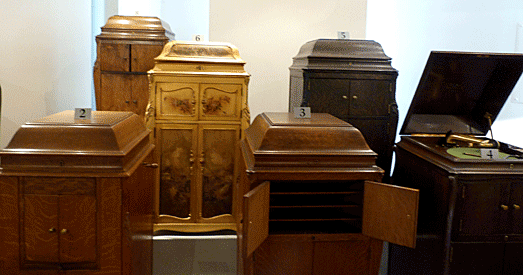
Visitors will also see a display showcasing a 1910 recording session
with conductor
Rosario Bourdon and the Victor Salon Orchestra. During most of Victor’s
existence, acoustic recording was used and it required grouping artists
as close to the horn as possible. Next to a large photo showing the
orchestra in session stands a portable recording device with large
removable horn.
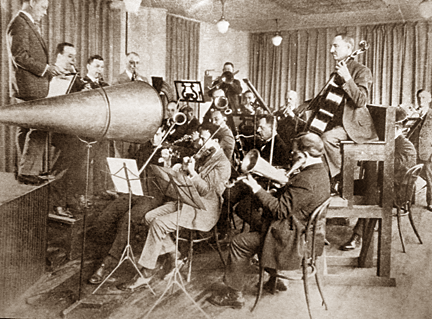
Although the museum isn’t large, it displays a fine collection of early
Victrolas, including one that once sat in the White House.
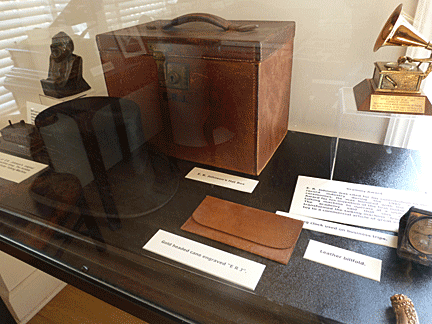 In
a small side room are display cases full of some of Johnson’s personal
possessions, including his top hat, cane, billfold, alarm clock, and a
Grammy Award presented to him in 1985. In
a small side room are display cases full of some of Johnson’s personal
possessions, including his top hat, cane, billfold, alarm clock, and a
Grammy Award presented to him in 1985.
There’s also some fine early accoustic equipment, including Victor’s
Orthophonic Victrola, of which 329,100 were made from 1928 to 1930. This
portable “suitcase” model was constructed on a steel frame with padded
blue or brown covering. It featured an Orthophonic sound box and an
automatic brake. Columbia and Victor introduced portables in 1924. And
sold them for $35.
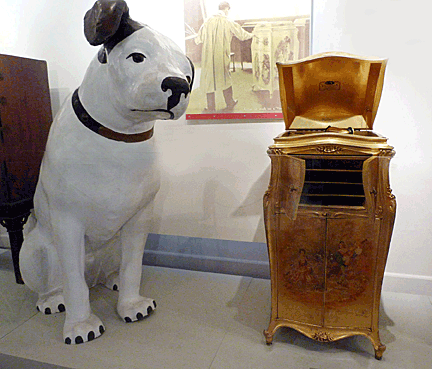 The
museum’s second floor combines exhibit space and seating for lectures
and demonstrations in an open floor plan. One gilded floor model of
Victrola really stands out. There are also other models of Victrolas
produced by Victor, as well as a Gramophone, produced by Thomas Edison,
which was the first instrument to record and playback speech. There’s
also a model of the first coin-operated phonograph, precursor to the
juke box. The
museum’s second floor combines exhibit space and seating for lectures
and demonstrations in an open floor plan. One gilded floor model of
Victrola really stands out. There are also other models of Victrolas
produced by Victor, as well as a Gramophone, produced by Thomas Edison,
which was the first instrument to record and playback speech. There’s
also a model of the first coin-operated phonograph, precursor to the
juke box.
Smaller showcases hold memorabilia, brochures, buttons, and records
while posters and early advertisements for Victor products adorn the
walls.
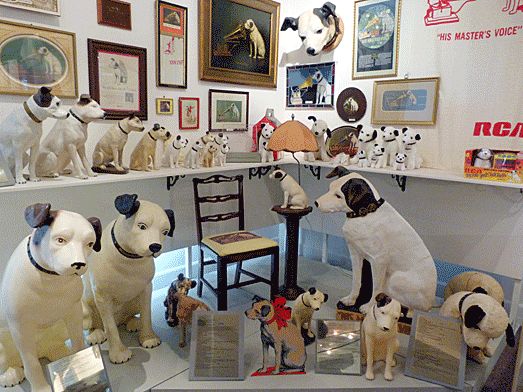
Also displayed are numerous models of “Nipper,” the dog used in Victor’s
and later RCA Victor’s logo. They come in all shapes and sizes,
including a giant one that stands over six feet tall. Large statues of
Nipper graced the Victor showrooms and retail stores selling Victor
products.
The Johnson Victrola Museum is open Wednesdays through Saturdays from
9:00 A.M. to 4:30 P.M. Admission is free.
<
Back to More Antiques to View
Next Article > |
